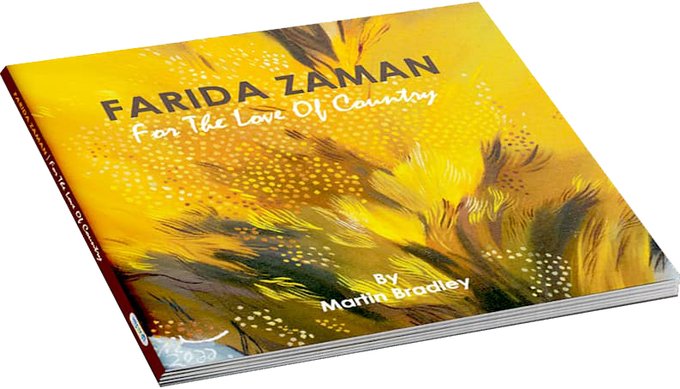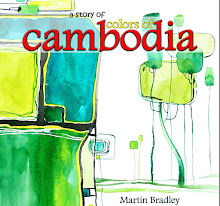All 322 pages, plus half-gatefold card covers of Rana Safvi’s book ’The Forgotten Cities of Delhi’ reached me, from India, in just four days (two of which were weekend). Harpers Collins Publishers India had, indeed, done me proud to rush off this astounding book to arrive, in Malaysia, so quickly. A diminutive motorcycle courier had stopped by our electronic gate. He had thrust a small ‘Aramex’ parcel at my wife, who just happened two be in the front garden at the time. ‘It is for you,’ she called as the young motorcyclist rode off. For me? But I rarely receive parcels. Then, as my wife handed over the white paper parcel with the legend ‘HarperCollinsPublishersIndia’ at the bottom, the thought struck me, ’The Forgotten Cities of Delhi’ had arrived. Wonderful, now to perchance to read.
India, but especially its capital - Delhi, keeps drawing me back. I had first set foot in India in 1996. It was a trip to see the sea, in Goa, and to ease myself gently into that ancient land full of mystery and mysteries which, at first glance may appear ‘full-on’ and a little daunting. Goa, as it turned out, was just what the doctor ordered.
I have visited many places in India since. My first visit to Delhi was in 1998, as part of a ‘Golden Triangle’ tour starting at Delhi, then visiting the glory of Taj Mahal, outside of Agra, and the wonderful Hawa Mahal or ‘Palace of the Winds’ (Amber Fort et al) in Jaipur. It was then time to return to Delhi, for a day, before flying back to Britain. When the time came to go, I wished that I could stay on, like William Dalrymple, for a whole year in Delhi (as recounted in his ‘City of Djinns’, 1993).
I recall standing (literally) at a crossroads, staring up into the orderliness of Lutyen’s (New) Delhi, remembering photos of my father there. He had stood, not to attention as a lowly British sergeant erect in his uniform, but as a man, taking a casual stance, sans his military hat, in the city that he loved. The era in which the photograph was taken, was at a time (1930s) before my father had heard of his recall to the British Army, which was to pull him away from Delhi, away from his billet at the Red Fort, and away from the New Delhi Police and his application to serve with them. Despite over a decade in India, once wrenched apart from that city and that sub-continent, my father never did return. In 1998, I stood at that crossroads in his stead.
My second engagement with the glory which is Delhi, was with thanks to the Sahitya Akademi (National Academy of Letters), requesting me to read some of my poetry at the ‘Commonwealth Literary Meet’, in the October of 2010. It was a wonderful time and a further opportunity for me to wander the vastness and antiquity, of Delhi’s cities.
Rana Safvi and Harper Collins India have given me another excuse to return, this time through Rana Safvi’s writing and myriad photos by Syed Mohammad Qasim which grace the book ‘The Forgotten Cities of Delhi’, the second part of Rana Savi’s ‘Where Stones Speak’ trilogy. Delhi calls to me time after time. Delhi is where Allen Ginsberg, after sightseeing for a week, met the indomitable Kushwant Singh for ‘literary tea’ (‘Indian Journals’, 1962-1963) in a great meeting of minds that I wish that I had been party to, and Delhi is where I shall, inevitably, return one day.
‘The Forgotten Cities of Delhi’, is certainly a book that I wished that I’d had when wandering that city during my 2010 visit. Safvi’s work is painstakingly precise in its accounting of the various Delhis, and all-encompassing in its scope to include not just Delhi’s past cities, but also its individual mosques (such as the ‘Mohammad Wali Masjid’, discovered in Siri (also known as Dar-ul-Khilafat or seat of the Caliph). ‘Mohammad Wali Masjid was once a treasured mosque, but had been used for many years to store fodder not for the soul, but for cattle, unfortunately it has that in common with many of the ‘finds’ by Rana Safvi’s and Syed Mohammad Qasim. Safvi’s book reveals not just past glories, but intriguingly romantic structures promising to become present day wonders.
In conjunction with Syed Mohammad Qasim’s affirming photography, Safvi leads the viewer/reader into an astounding history of India’s capital (National Capital Territory of Delhi). Together, writer and photographer make known the beauties of ancient architectures such as the Tomb of Sultan Ghiyasuddin Tughlaq (founder of India’s Tughluq dynasty, died 1325 A.D.), and the quiet serenity of Lal Bangla (now adjacent to Delhi Golf Course) at Sundar Nagar, comprising of the mausoleums of Lal Kunwar (the mother of Shah Alam II), and Shah Alam II’s daughter Begum Jaan. Section six of ‘The Forgotten Cities of Delhi’ unveils the sixth citadel of Dehli - Dinpanah/Shergarth (p181), now Pragati Maidan. Author and photographer show the ruins of a ‘Hammam’ (a traditional Mughal ‘Turkish Bath’) adjacent to the Sher Mandal and within the Purana Qila (or Old Fort). Those Hammam remains are a touching site, situated near to the marvellous Sher Mandal, and within that ancient Indian fortress of Purana Qila, and a poignant reminder of much of India’s northern heritage.
If you are visiting Delhi, or are a confirmed Indiaphile, ‘The Forgotten Cities of Delhi’ by Rana Safvi and profusely illustrated with photographs by Syed Mohammad Qasim, is a must have. Short of actually having Ms Safvi accompanying you on a series of marvellous adventures in and around India’s northern city of Delhi, and its present day capital, the book will guide you. True it will be no substitute for the edifying scholar herself, or for Dev Anand from Vijay Anand’s film adaption of R.K.Narayan’s ‘The Guide’, but in place of these the book will carry you into myriad adventures as you witness, for yourself, and come to love Delhi’s ‘forgotten’, but now remembered, cities.
Martin Bradley 5th July 2018







